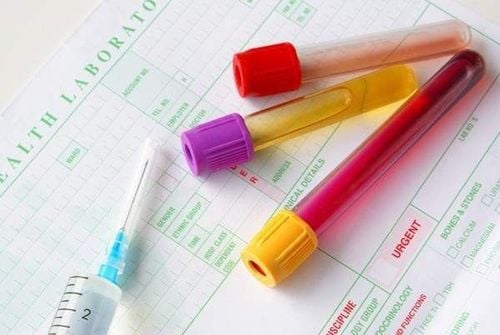This is an automatically translated article.
The article was consulted with MSc, Dr. Trinh Thi Thanh Huyen - Obstetrician and Gynecologist - Department of Obstetrics and Gynecology - Vinmec Hai Phong International General Hospital.The hymen is a thin membrane 2 - 3cm from the vaginal opening, with one or several small holes for menstruation to exit. The structure of the hymen has many blood vessels that knit together, so when the hymen is torn, there will be a little blood attached.
1. Structure and position of hymen
In terms of anatomical structure, the hymen is a thin mucosal tissue belonging to the female genitals. Specifically answering the question "where is the hymen", experts say that this "shield" is located behind the big and small lips, about 2-3 cm from the vaginal opening and dividing between the vulva and the vagina. vagina. The structure of the hymen is soft and has the ability to stretch and fold. The hymen has almost no nerves and no special physiological function, it is also suggested that it helps to protect the vagina from bacterial attack that causes infection.Normally, in the middle of the hymen, there will be one, two or more small holes that allow menstrual blood to drain out every month. The size of the hole between the hymen is different for each girl, sometimes as narrow as just one finger, but can also be elastically flexible, ranging up to the size of two fingers. Although less common, there are hymens without holes. This is a malformation that can cause many complications for girls during puberty.
2. How is the hymen formed?
Normally, every girl has a hymen and is formed at birth. It has been suggested that the hymen is a remnant left over in the embryo's development and has no special meaning or function. Starting from the 3rd week to the 2nd trimester is the period when the genital tract is formed. The hymen appears behind the vagina and is considered fully developed by the 5th month of pregnancy. However, this is not absolute because there are still cases of congenital hymenectomy, or more rarely, non-vaginal genital malformations.While in the womb, girls will receive hormones from their mothers and this determines the color, shape or thickness of the hymen. In girls, the diameter of the hymen opening expands by about 1mm for each year of age. When entering puberty, estrogen in the female body contributes to nourishing the hymen to become more elastic and elastic.
3. The risk of affecting the hymen

Dùng tampon hay cốc nguyệt san khi hành kinh có thể gây rách màng trinh.
4. Unperforated hymen
About 1 in 1000 girls will have a hymen that is not perforated, in other words, there is no small hole in the middle of the hymen. It is not possible to notice any symptoms of the disease until puberty, when the menstrual cycle begins. When menstruation begins, menstrual blood will be blocked and stagnate in the uterus as well as unable to exit the vagina, causing pain. Currently, experts still do not explain why this unusual problem occurs. If experiencing symptoms of abdominal pain and swelling of the lower abdomen during puberty, girls should be taken to a reputable gynecological examination facility for timely intervention by a doctor. Hymenectomy is used to treat this condition, helping to keep the menstrual period running normally.
Đau bụng do máu kinh ứ đọng, không thể thoát ra ngoài vì màng trinh không thủng.
5. Hymen and virginity
It is necessary to clearly distinguish the two concepts "hymen" and "virginity" to avoid confusion and unnecessary worry. While "hymen" is an organization of female genitalia, "virginity" is a social norm. The state of the hymen still or not, or whether there is bleeding or not when having sex for the first time does not accurately reflect a woman's virginity level. In fact, despite being a virgin, there are still many girls who do not bleed after having intercourse for the first time, excluding unintended penetration effects, natural factors can be mentioned such as:No Congenital hymen The hymen is so elastic that it won't tear The size of the hymen is large The blood is so little it can't even be seen It's possible that the hymen won't tear until the first birth first. Obstetricians have confirmed that hymen can still be seen in pregnant women who are about to give birth. Therefore, not every first sexual intercourse is required to have virgin blood and based on that sign, it is confirmed that the girl is a virgin. However, if there is a need to check, women can still go to a reputable gynecological facility to check the status of their hymen. Furthermore, the hymen can also be restored to its original state by patching the hymen.
Please dial HOTLINE for more information or register for an appointment HERE. Download MyVinmec app to make appointments faster and to manage your bookings easily.













